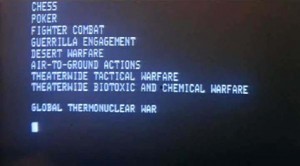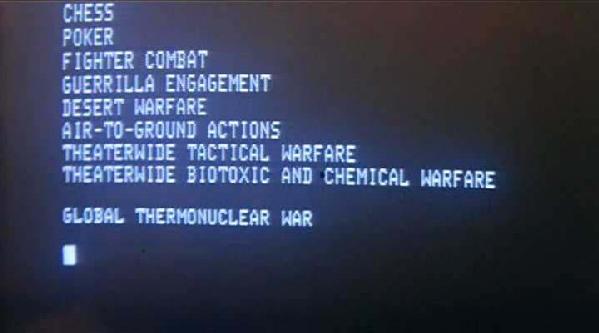
Checkers, Risk, Command & Conquer, and Fencing…since childhood, humans are exposed to games in various forms. From basic to advanced and from purely fun to cut-throat poker matches – we are continuously given opportunities to challenge ourselves and compete against fellow man in the arena (or on the screen).
The United States military has numerous, robust and mature wargaming departments that have been developing complex scenarios for more than 75 years. It is not just recreating history merely for recreational purposes, but instead it captures the vast capabilities of Naval Fleets of today, placed at the hands of military professionals to face wicked problems and thinking enemies. This week CIMSEC will explore how wargaming specifically has been used by military and security professionals for gaming’s intrinsic conflict qualities and also why Wargaming is still relevant. This week we will ask readers to consider the strengths and weaknesses of current wargaming endeavors and to propose games that we are not playing, but are inherently part of maritime security.
As we look to the future, how shall we best capture the gaming process and synchronize the structure with technology? During peacetime, gaming is one effective tool for testing the commander for the friction of combat (See Sumida on Clausewitz). This week we ask what else can and should be considered in future wargames to fully challenge the commander-of-tomorrow and to prepare the forces for the demands of confrontation in the maritime domain. What can future technology bring to further enhance our cognitive ability and challenge the profession of arms?
We look forward to your comments, critiques, and discourse.


The U.S. military does indeed possess an extensive wargaming infrastructure, but it is important to understand that it is very heterogeneous and diverse, conducting many types of games for many different reasons. Moreover, much gaming is contracted out to consulting firms such as SAIC, Booz Allen and others. It is critical not to conflate gaming with simulation or to regard gaming as simply gaming; there is a wide intellectual gulf between games conducted for training and education purposes and those designed for research. In the emergent operational environment there is a huge role to be played by training and education games, increasingly supported by ever-more sophisticated simulation. However, my remarks will focus on research games.
Wargaming is a very flexible tool, and even in the realm of research, it takes many different forms, and sometimes organizations specialize in a specific type. At the Naval War College we employ a number of different forms of research gaming (in addition to a menu of educational games), from the continuous tactical/technical games of our student advanced research (Halsey) groups to the larger episodic games our Wargaming Department conducts for external sponsors, to the strategic games supported by our Strategic Research Department. Despite the variety of games and the evolution of gaming practices here at Newport over the past three decades of my involvement, I think I can offer some observations on the links between gaming and future warfare.
The first and most important observation is that research gaming is a sensitive business. Apart from producing insidiously distorted results, games can “whisper” to you, providing counter-intuitive or perhaps conventional wisdom-threatening indications that are easy to miss. Admiral Yamamoto’s staff missed the significance of a junior “Red” player placing an American carrier force northeast of Midway in their workup game. A junior intelligence officer playing a game here in the 1930s adopted a suicide pilot tactic that everyone ignored. A student of mine, playing Red in a board game that represented C2 with a budget metaphor, sent his diesel subs out not to attack Blue but to hide and make Blue spend his C2 points looking for them rather than spending them on attacking shore targets. So what? Think about the Argentine Type 209 that so spooked the British Task Force that they almost ran out of ASW weapons shooting at false targets. Our little board game whispered to us “the fleet-in-being strategy is not dead!” I go through all of this simply to say that when a game has “the volume turned up” – such as focusing on validating some big deal concept – the whispers can be drowned out. Here at Newport we try to keep the noise level down by not charging for our games (we are mission funded) so that we can tell sponsors no or tell them things they do not want to hear (we don’t depend on return business) and also by maintaining a faculty-style ethos within the departments. Thus our incentive structure is clean and we can listen closely for the whispers. There is a lot more to this that I do not have time to cover here, but one way to get future warfare wrong is to be careless about who does research gaming and how they do it.
There is a legitimate special and kinetic element to gaming, but for several reasons our focus here in Newport has progressively shifted to communication (more technically, signaling) among players. I think it was Admiral Bradley Fiske who said that no wargame could ever simulate the stress of actual combat. Assuming he was right, there are profound implications for wargaming. First and foremost, the presumed meat and potatoes of wargaming, player decisions, have no validity as data points. Players, regardless of their experience and knowledge, will not – cannot – make decisions in a game as they would in real life. What this leaves us with is what the players communicate to each other and to the umpires (who we now regard as especially influential players). We have developed the requisite analytic tools for capturing and analyzing these communications, as well as tools for lubricating such communications during the game. It has been surprising what you can learn from a game when you take this approach.
This discussion is important because the emerging warfare environment is so intensely dependent on various kinds of communications. In 2000 and 2001 we conducted “network-centric warfare” (NCW) games, attempting to chase “shared situational awareness” around a network. While some practical value was gained from these games (KWEB), the noise of the ideology of NCW tended to drown out any whispers that may have cropped up. In a future of long range precision strike, autonomous systems and of course cyberspace – and the measures adopted to counter our advantages in all of these – it is the element of human communication that will be decisive. The current hot concept – mission command – is even more dependent on good human communication since it presumes constrictions and blockages to a voluminous data flow. Gaming, done right, offers the chance to explore the role of communication in the future warfare environment and to prepare our warfighters to communicate effectively.
One more observation. I have learned that visualization is important as an aid both to understanding a complicated situation and to communication. The phrase “thinking out of the box” is trite, but in the case of advancing the art of visualization, it is literally true, if the box is regarded to be a computer monitor. Without going into all the technicalities, we have found significant utility in using really big (24ft by 44ft) printed maps, not as wargame boards but as visualization tools. These big physical maps (populated with miniature warships and unit markers) give a sense of dimension not obtainable in other ways, and, to paraphrase one of my faculty members, the theater forces itself on you. You cannot discuss a warfare situation while standing on one of these maps without taking into account the rest of what is going on in the theater – or the world, if we are using our world map. Additionally, we have developed large (50” class) touch screen monitors that can be tilted to the horizontal for map display. This is a more “democratic” display, with people on all sides seeing the map from different angles but all being in a peer physical position with respect to the others. This changes the quality of the discussion. All of this is to say that getting a grip on future warfare through gaming is not simply a matter of better computer simulation; it’s about cultivating the human intellect.